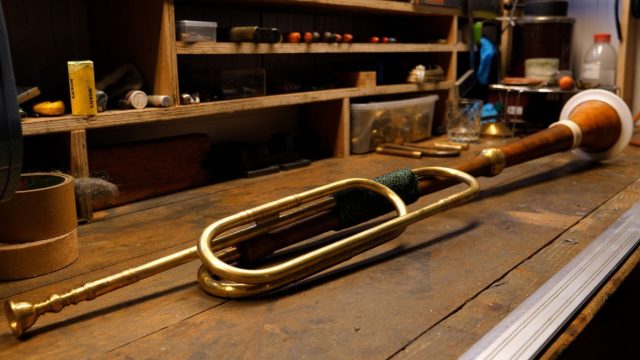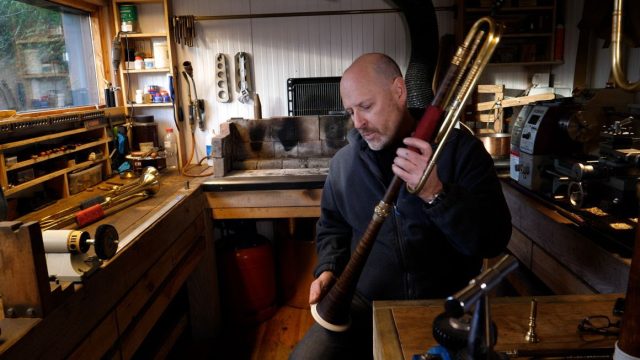A first
In the third act of German composer Richard Wagner's 1865 opera Tristan und Isolde , the arrival of Isolde's ship is announced by a cheerful trumpet melody sounding from the side stage. The tune is played in the story by a shepherd. It is a short melody but Wagner wanted it to have a particular sound. In his original score, he wrote some instructions. The trumpet had to sound "like an alpine horn" with "a wooden cup" and "within the natural scale".
This trumpet did not exist when the opera was premiered in Munich. No indication is known to us that it ever existed. Usually, opera houses use a hunting horn or other wind instrument with valves for this short melody. Until today. OBV had the instrument Wagner had in mind built especially for the upcoming production of Tristan und Isolde that will premiere on 22 March.
According to our information, it is a first in music history and will allow us to hear for the first time what Wagner intended. The initiator of the adventure is Serge Rigaumont, trumpeter in the Symphonic Orchestra Opera Ballet Vlaanderen. He immersed himself in the Wagner trumpet and convinced music director Alejo Pérez to have it built.


